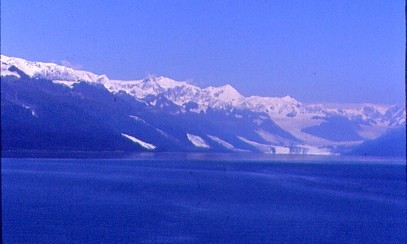
I had gone to sleep in the Gulf of Alaska and woke up in the Gulf of Alaska over two hundred miles northwest. I enjoyed a buffet breakfast with my mother as the ship passed Cape St. Elias then did laundry in the room across from ours as I watched "Shrek II".
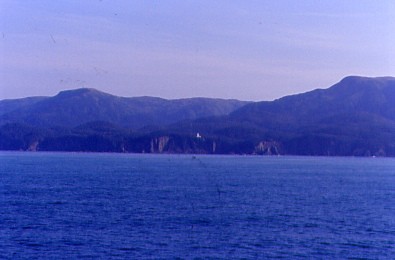
The ship passed the lighthouse at Cape Hinchinbrook and entered the Hinchinbrook Entrance to Prince William Sound.
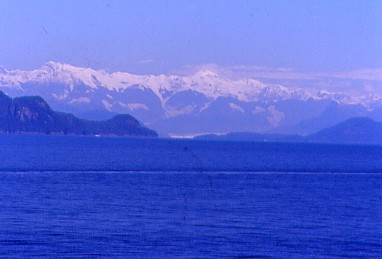
Passing the Columbia Glacier, which descends from an icefield 10,000 feet above sea level, down the flanks of the Chugach Mountains, and into a narrow inlet that leads into Prince William Sound. It has long been an archetype of the world's most rapidly changing glaciers. The Columbia is a large tidewater glacier, flowing directly into the sea. When British explorers first surveyed it in 1794, its nose, or terminus, extended south to the northern edge of Heather Island, near the mouth of Columbia Bay. The glacier held that position until 1980, when it began a rapid retreat that continues today.
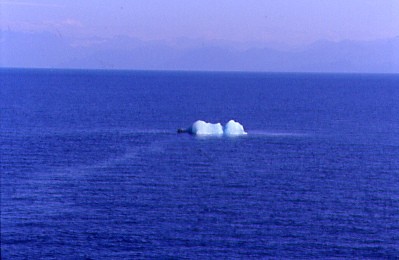
Ice floes after being carved from the Columbia Glacier.
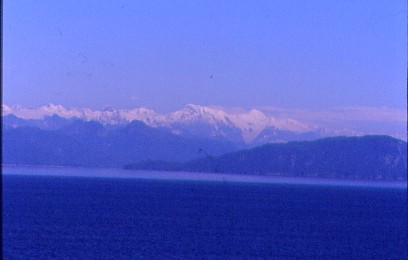
I enjoyed my final buffet lunch of the cruise before going to the front of the Lido Deck and sat enjoying the Chugach Mountains.
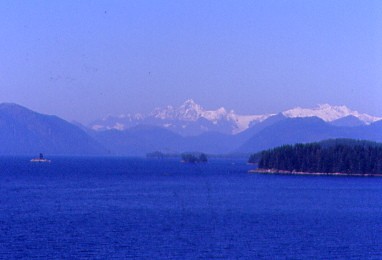
Later our ship passed Two Tree Island with the beautiful mountains behind.
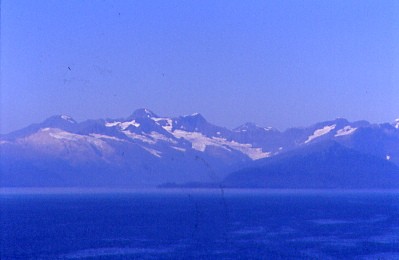
The year was 1899 when millionaire railroad tycoon Edward Henry Harriman set sail on an ambitious expedition to Alaska on which he would chart, and name many Alaskan glaciers. Worn out from hard work, his doctor had recommended he take a vacation, and that voyage was his answer — a 19th-century millionaire's quest to rejuvenate. On May 31, 1899, 126 passengers and crew — 23 of them esteemed scientists — boarded the well-appointed George W. Elder for a highly- publicized, excitement-filled departure. The New York Times called their destination the "American Eldorado" because of the concurrent Alaskan gold rush. Two months later, however, Harriman returned with natural treasures: more than 100 trunks full of specimens and over 5,000 photographs and colored illustrations. They are still considered a precious scientific collection.
On June 26, 1899, the Elder navigated College Fjord, and the party of scientists (which included John Muir, an Amherst College professor and glacier expert, and Harvard mineralogy instructor Charles Palache) named the Alaskan glaciers there after their Ivy League alma maters and their sister schools. Those names include Amherst, Barnard, Bryn Mawr, Harvard, Smith, Vassar and Yale. The glaciers of the northwest side feature the names of women's colleges, and the glaciers of the fork and the southeast side sport the names of men's colleges.
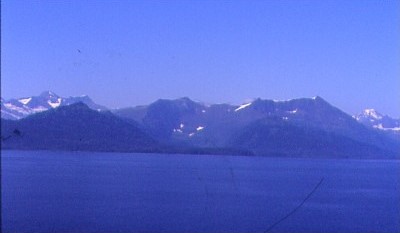
The ship turned north into College Fjord.
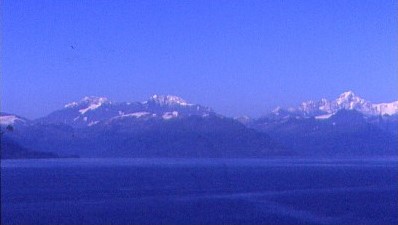
The magnificent mountains off to the right.
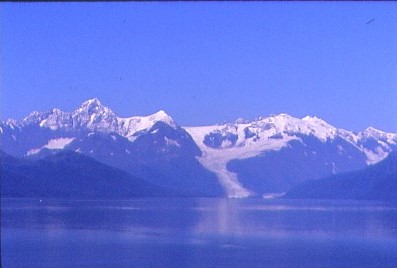
Barry Glacier flows southwest for 16 miles to Barry Arm of Harriman Fjord and extends south for ten miles from the terminus of Barry Glacier to Point Packenham at Port Wells. The glacier and fjord were named for Colonel Thomas Henry Barry, a United States Army Major General at the time, by Captain Edward F. Glenn of the United States Army, a leader of an 1898 US Army expedition to find an Alaskan route to the Klondike gold fields.
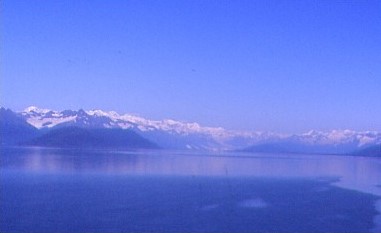
A distant view of Harvard Glacier.
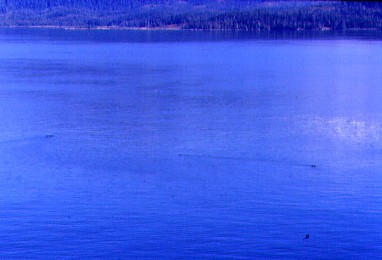
A parade of sea otters cruised by the Sun Princess to the amazement of our deck passengers.
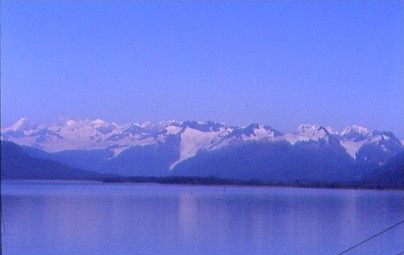
More of the beautiful peaks and glaciers. We were blessed by absolutely beautiful clear weather.
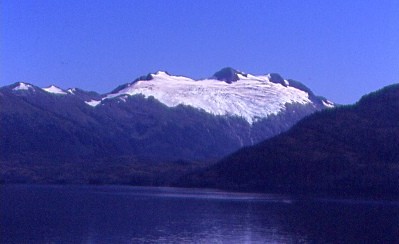
Holyoke Glacier located on the west bank of College Fjord, trending southeast. It is situated 6.8 miles southwest of College Point, is 1.5 miles long and was named by U.S. Grant and D.F. Higgins of the U.S. Geological Survey, in 1908 for Mount Holyoke College in South Hadley, Massachusetts.
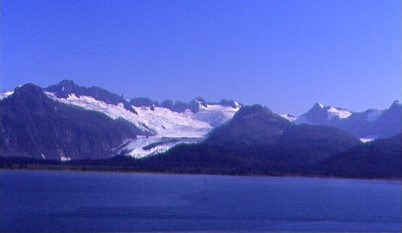
Barnard Glacier is 33 miles long and trends southwest to the Chitina River east of Hawkins Glacier, forty miles southeast of McCarthy in the Saint Elias Mountains. The glacier is named for Barnard College, a member of the Seven Sisters that is associated with Columbia University in New York.
The glacier is a clean, crevassed ice tongue, with no medial or lateral moraines. It heads in a large cirque and connects with an irregular ice mass on a shelf to the nor glacier which has small terminal lobes and terminates on the lip of its hanging valley. Two streams descend from the terminus. Mature spruce forest extending from the fiord well up toward the glacier terminus indicates that Barnard Glacier has not descended much farther toward the fiord for a century or more; but a barren zone between the ice and forest, present in 1899 as well as in 1910, proves that it was retreating. Between 1899 and 1910 there was an advance of the south lobe down the lip of the hanging valley, and a slight advance of the north lobe, while between the two lobes an ice block talus was formed.

Combined view of the Wellesley, Vassar, Bryn Mawr and Smith Glaciers.
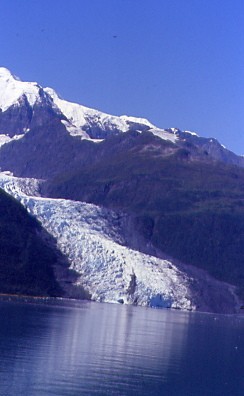
Wellesley Glacier, a four mile glacier which trends east to a lagoon on the west bank of College Fjord. It was named for Wellesley College in Wellesley, Massachusetts by members of the 1899 Harriman Alaska Expedition.
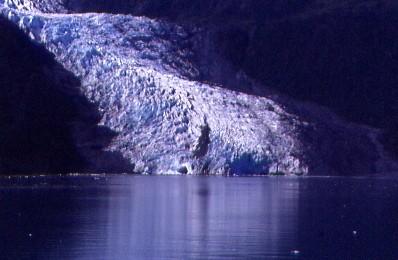
That cave is over 100 feet high.
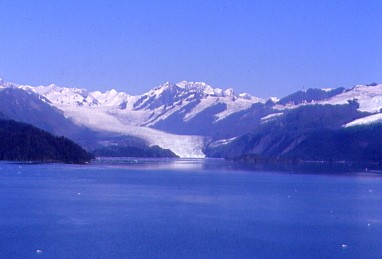
Yale Glacier, named for Yale University by members of the 1899 Harriman Alaska Expedition, is 20 miles long. Its width varies from a mile-and-a-quarter to two miles. In its lower portion, the glacier slopes at the rate of 600 to 700 feet per mile, attaining an elevation of 2,500 feet three-and-a-half miles from the front, and ascending gradually to 6,000 or 7,000 foot cirques east of Mt. Glenn. The Yale Glacier, though wider at the terminus, is probably not as long as the Harvard Glacier. It terminates in the Yale Arm of College Fiord, with an unusually irregular front, the south side of the glacier extending further down the fjord than the north side. This terminal cliff is between 200 and 300 feet high. There are well-marked lateral moraines, but no medial moraines. In the absence of a number of large tributaries which supply quantities of ice, and lateral moraines that become medials, Yale Glacier differs very decidedly from Harvard Glacier. The distant tributaries are rather small glaciers cascading from extensive neve fields on the mountain slopes. In the lower part of the glacier there are not many tributaries on the northwestern side, contrasting with a considerable number which descend on the southeastern side from the snowfields and cirques about Mt. Castner and other mountains between College Fiord and Unakwik Inlet.
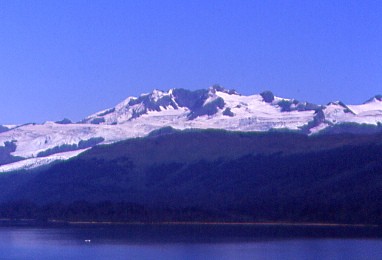
Dartmouth Glacier is a 3.4-mile long glacier which is southwest of Mount Castner in the Chugach Mountains and trends southwest to its terminus at the head of the Coghill River, 47 miles west of Valdez. The name was reported in 1908 by Grant and Higgins and is presumably named for Dartmouth College in Hanover, New Hampshire.
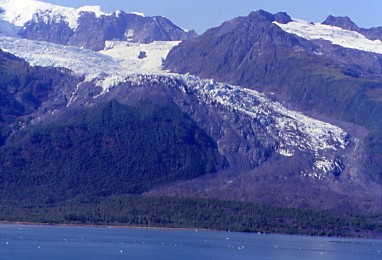
The Vassar Glacier no longer reaches the tide of College Fjord. This 4.3 mile long glacier trends southeast to College Fjord and was named for Vassar College in Poughkeepsie, New York, by members of the 1899 Harriman Alaska Expedition.
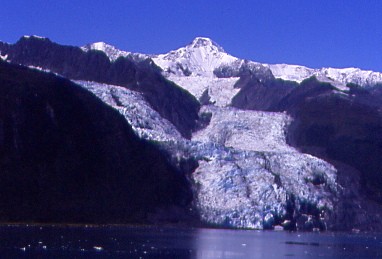
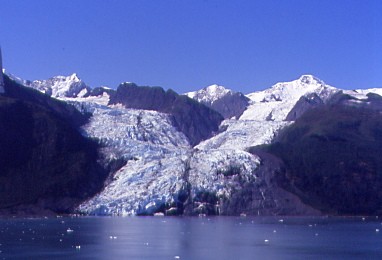
Bryn Mawr Glacier, 4.5 miles long which trends southeast to Harvard Arm of College Fjord and was named for Bryn Mawr College in Bryn Mawr, Pennsylvania.
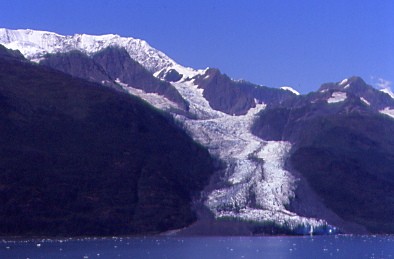
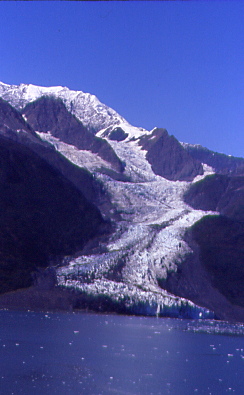
The Smith Glacier barely reaches the tide. This 5.5 mile long glacier trends southeast to Harvard Arm of College Fjord and was named for Smith College in Northampton, Massachusetts.
>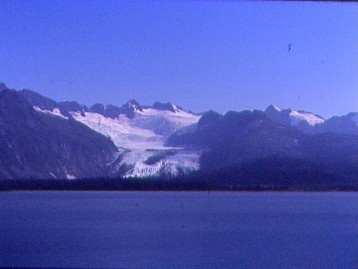
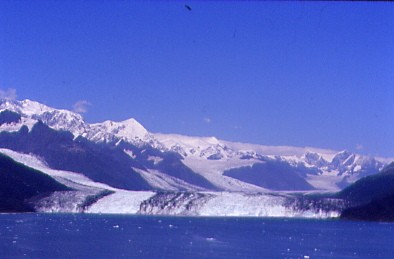
The Sun Princess moved closer and closer to Harvard Glacier.
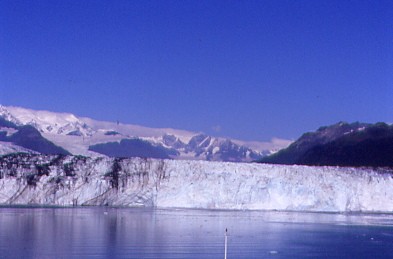
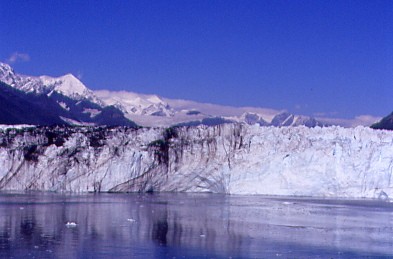
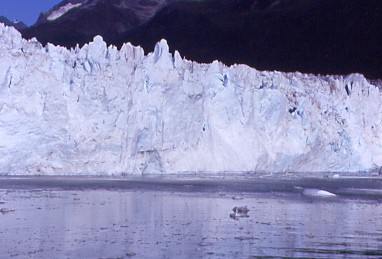
Harvard Glacier is the largest of the College Fjord Alaskan glaciers at its northwestern head, and it is the second-largest tidewater glacier in Prince William Sound. A tidewater glacier flows from a mountain valley into the sea and will dramatically calve when a mass of ice splits off the glacier and plunges thunderously into the water. The most active tidewater glaciers in the world are in Prince William Sound. Harvard Glacier may also be the most dramatic to observe: its face, at one-and-a-half miles wide, shows off its over-200-foot-thick depth and it stretches 24 miles back to the Chugach Icefield — part of Chugach National Forest.
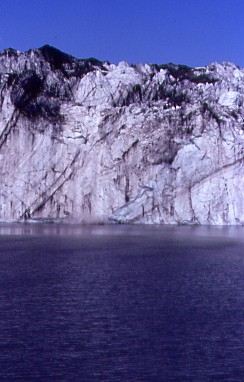
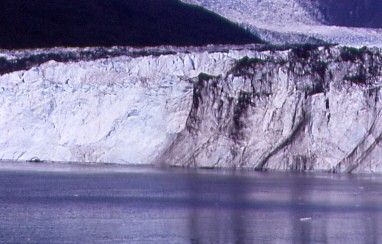
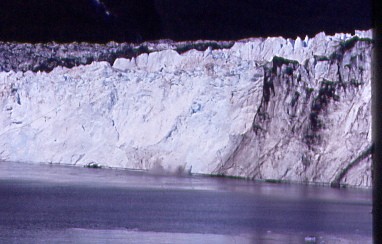
Harvard Glacier calving, which I caught on film.
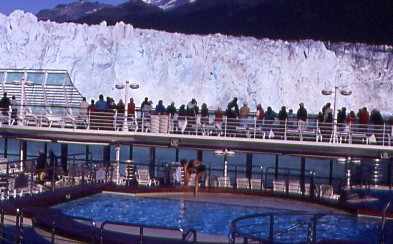
One woman who had not been paying attention to the incredible scenery and vistas finally noticed Harvard Glacier.
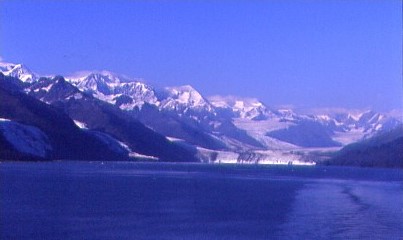
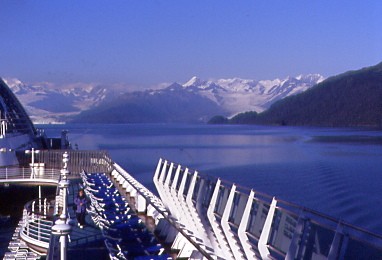
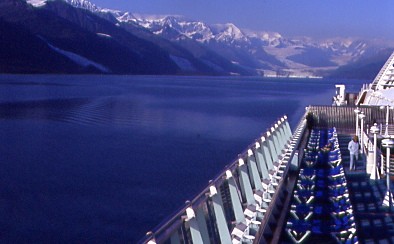
A trio of final pictures from College Fjord, after which I checked my e-mail for the last time then returned to our room to watch "Cheaper by the Dozen", followed by "Fire Down Under" before getting ready for the last dinner in the Regency Dining Room.
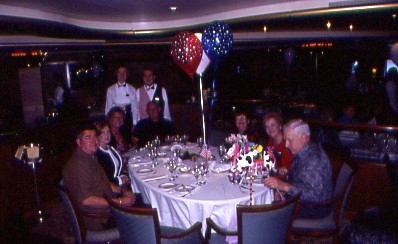
A group picture of all who dined with my mother and I, as well as Valentin and Katarzyna tonight.

I had Prime Rib and chose Baked Alaska for dessert, something I had never had before.
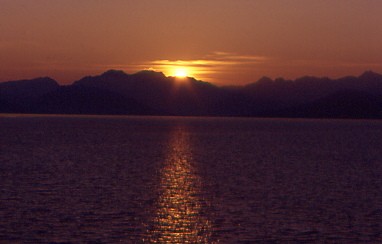
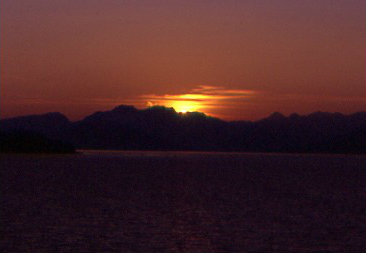
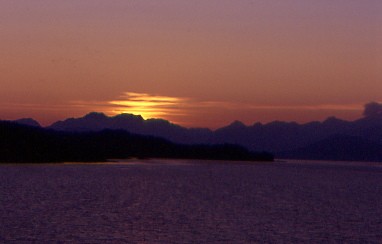
I went up to the Promenade Deck to watch the sun set on what had been another fantastic day then back in the room, I put our bags out in the hall and watched Sports Center before calling it a final night on the Sun Princess.
The ship cruised Prince William Sound to Whittier, where we arrived at midnight.